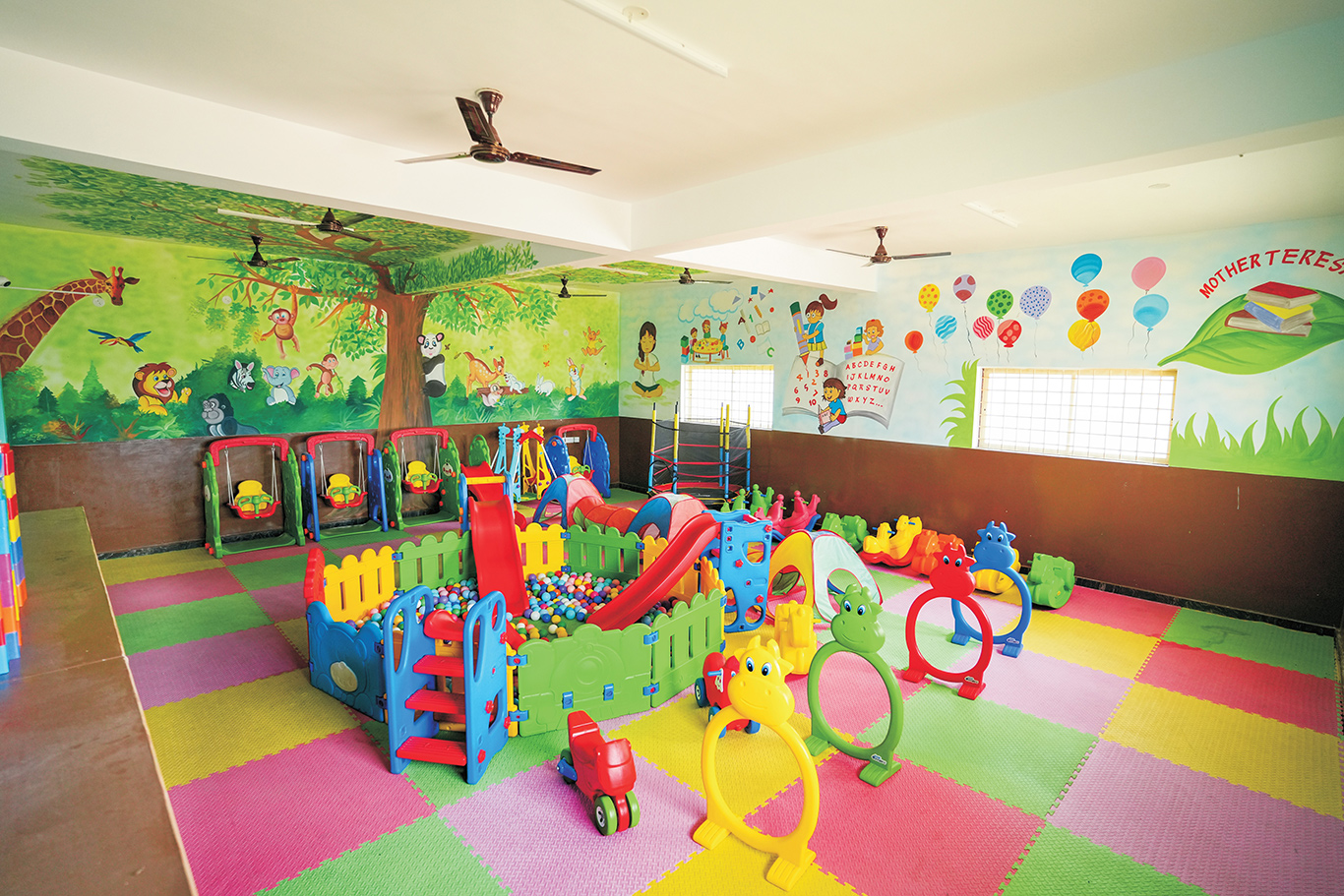Our Curriculum
KINDERGARTEN:
MTS focus in kindergarten is typically on holistic development, including cognitive, emotional, social and physical development.
Key components of a kindergarten curriculum may include:
- Play-Based Learning: Kindergarten education often emphasizes learning through play. Activities such as storytelling, pretend play and interactive games are commonly used to make learning fun and engaging.
- Language Development: Activities to enhance language skills, including storytelling, rhymes, songs and vocabulary-building exercises, are important in the early years.
- Math Readiness: Basic math concepts may be introduced through activities that involve counting, sorting and recognizing shapes and patterns.
- Social and Emotional Development: Kindergarten programs usually include activities that promote social skills, cooperation and emotional well-being. Building friendships, sharing and learning to express emotions are key aspects.
- Fine and Gross Motor Skills: Activities to develop fine motor skills, such as drawing and coloring, as well as gross motor skills, like outdoor play and physical activities, are typically incorporated.
- Art and Creativity: Kindergarten often includes art and craft activities to encourage creativity and self-expression.
- Introduction to Basic Concepts: Introducing basic concepts related to the environment, seasons and the surrounding world is common in kindergarten.
PRIMARY SCHOOL CURRICULUM:
MTS primary curriculum includes various subjects and emphasizes interactive and activity-based learning methodologies.
Here are key features of the primary CBSE curriculum:
- Subjects:
- Primary classes typically include core subjects such as Mathematics, English, Hindi (or any other language) and Environmental Studies (EVS), Science, GK, IT, Value Education, Art Education, Communicative English and Hand Writing.
- The focus is on building foundational skills in language, numeracy and basic scientific understanding.
- Activity-Based Learning:
- The curriculum often emphasizes activity-based learning to make concepts more tangible and engaging for young learners.
- Activities may include projects, experiments, storytelling and hands-on experiences.
- Language Development:
- Language skills development is a crucial aspect of the primary curriculum. Students are introduced to reading, writing and basic grammar in English and one more language (commonly Hindi or a regional language).
- Mathematics:
- Mathematics learning begins with basic numeracy skills and progresses to foundational concepts such as addition, subtraction, multiplication and division.
- Problem-solving skills are introduced through real-life examples and situations.
- Environmental Studies (EVS) or Science:
- In lower classes, the focus is on the environment, nature and basic scientific concepts.
- As students’ progress, they may be introduced to the separate disciplines of Physics, Chemistry and Biology.
- Social and Moral Values:
- The curriculum often includes elements that promote social and moral values, emphasizing character development and responsible citizenship.
- Technology Integration:
- Depending on the resources available, technology may be integrated into the learning process to enhance understanding and engagement.
SECONDARY SCHOOL CURRICULUM:
The secondary curriculum of our School covers Classes 6 to 10. The focus during these years is on building a strong foundation in various subjects, fostering critical thinking and preparing students for the higher secondary level.
- Subjects:
- The secondary curriculum includes core subjects such as Mathematics, Science, Social Science, English and a second language (often Hindi or a regional language).
- Students are exposed to a more specialized and in-depth study of these subjects compared to primary classes.
- Mathematics and Science:
- Mathematics and Science subjects are typically divided into separate disciplines, including Physics, Chemistry, Biology and Mathematics.
- The curriculum focuses on developing analytical and problem-solving skills in these subjects.
- Social Science:
- Social Science includes subjects like History, Geography, Political Science and Economics.
- The curriculum aims to provide students with a comprehensive understanding of the social, political and economic aspects of the world.
- Languages:
- English remains a core subject, emphasizing language skills, literature and communication.
- A second language (usually Hindi or a regional language) is also part of the curriculum.
- Introduction to Vocational Subjects:
- The schools may introduce vocational subjects or skill-based courses to provide students with practical knowledge and skills.
- Emphasis on Application of Knowledge:
- The curriculum emphasizes the application of knowledge through practical examples and real-life scenarios.
- Skill Subjects like Robotics and Coding.





